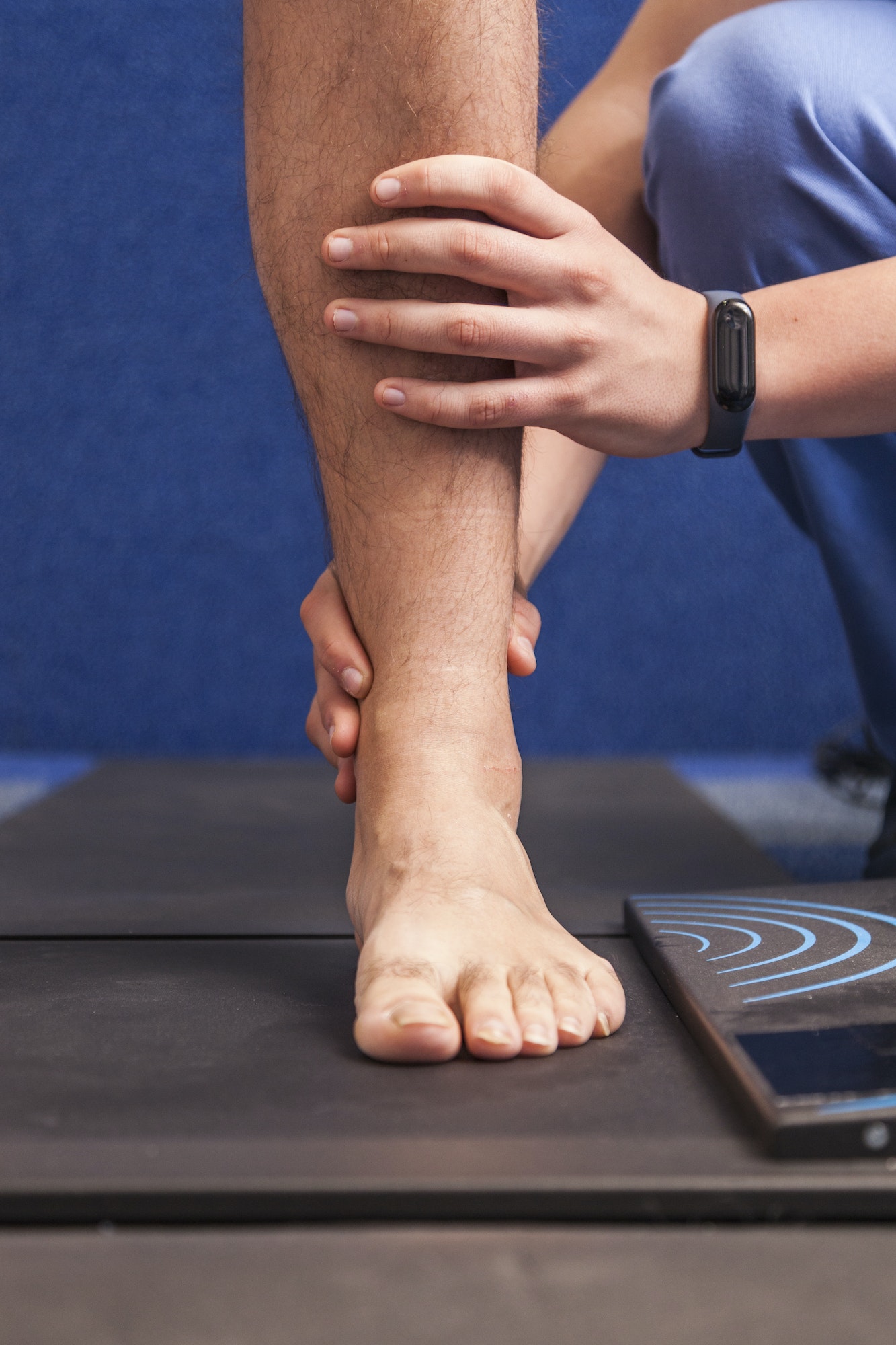Table of Contents
What is a Plantar Plate?
The plantar plate is a small structure on the underside of the foot where the forefoot meets the toes. It sits under the metatarsophalangeal (MTP) joints. The plantar plates have insertion points for tendons, ligaments, and other stabilizing structures.1
Given this anatomy set up, the plantar plates play an important role in stabilizing the toes, especially toes two, three, four, and five.
How Does a Plantar Plate Get Injured?
A plantar plate can get injured as a result of too much biomechanical stress. Feet that feature certain variations such as having a longer second metatarsal bone in the foot or having a large bunion that pushes on the second toe will put excessive stress on the second plantar plate.
The second plantar plate may also be at risk when the first MTP joint is too flexible and is unstable. When the first MTP joint is unstable, it causes excessive loading under the second MTP. Alternatively, a plantar plate can be damaged in response to excessive mobility of the MTP joint which may be associated with an inherited body type more than an injury to that joint. The plantar plate may also be injured in response to direct trauma, an infection, or in very rare cases a tumor.2
What Are The Common Symptoms of a Plantar Plate Tear?
Plantar plate tears occur most commonly in the second and third toes.3 Typically, patients with a plantar plate injury of a lesser toe will experience a gradual onset of forefoot or toe pain when standing, walking, running, or playing sports. There may also be swelling on the bottom of the foot.1 Individuals that are active with running or playing sports as well as those that are inactive may all be at risk of experiencing a plantar plate tear. Once the plantar plate is torn and the structure no longer provides the required toe stability, a patient may notice a change in the way that their toes and foot look.
Plantar plate tears can result in deformities like the second or third toe crossing over the neighboring toe.4 This occurs more commonly when the second toe crosses over the first toe or the third toe crosses over the second toe. The damage to the plantar plate can also cause a hammertoe which describes a toe that is stuck pointing downward, even at rest. The middle joint of the hammertoe is always in a position of bending or flexion. Hammertoes can cause excessive stress and calluses at the tip of the toe or at the middle joint of the toe and be quite painful at times when the toe rubs against the shoe. This deformity may make it difficult to find shoes that fit properly and are comfortable.4
Finally, the absence of a stable plantar plate can contribute to a claw toe. A claw toe describes a toe that typically sits off of the ground with the MTP joint in extension so that the toe points upward while the middle and end joints of the toe point downward in flexion. Because of the biomechanics created by the claw toe, this situation can further aggravate the tissues under the MTP joint and cause additional pain.
How to Diagnose a Plantar Plate Tear:
How to Treat Plantar Plate Tears:
It is common and best practice to try non-invasive conservative treatments initially. There is good evidence in the primary research to support the use of custom or over-the-counter orthotics to treat plantar plate tears.1,2 The insoles can decrease the pressures on the underside of the forefoot and offer pain reduction when paired with appropriately supportive shoes.2
There is also good evidence that strengthening the muscles that curl the toes can alleviate forefoot pain. When the toes lose the ability to functionally push off of the ground due to weakness, there is a large increase in the pressure on the metatarsal area under the foot. Repetitive overloading in the MTP area can contribute to forefoot pain in this area.6 Strengthening the muscles that curl the toes, such as with toe towel scrunching activities, can provide improved stability of the MTP joints.6 Another exercise that is easy to do at home and improves the toe flexor strength is toe curling over a book. Sit in a chair with the bare feet on a book or ream of paper. The toes will be near the edge of the book. Curl the toes over the edge of the book, holding each repetition for 10 seconds. Do 20x or more. This may be an easy exercise to do when watching TV and does not require a lot of concentration to perform it correctly.
Weil physical therapy can further alleviate the symptoms of plantar plate tears. The skilled physical therapists provide additional guided strengthening of the toe muscles, help to restore the normal toe range of motion and administer soft tissue massage for pain relief. Their interventions will speed your return to your preferred activities.
What to Expect When Having Surgery:
If conservative treatments do not fully alleviate the forefoot pain, surgical intervention may be a logical next step to consider. Surgical repair is more likely required in cases when the toes have begun to cross over and there is considerable deformity present in the foot. The surgical correction takes place under anesthesia in about 30 minutes. After the procedure, it is recommended that you put up your feet and relax for the first week or two in order to facilitate healing. It is not the time to clean out the closets or reorganize the pantry! When you do move around the house after the procedure, you can expect to get into supportive gym shoes or a surgical shoe and to begin to walk right away. However, to protect the new plantar plate repair, you will be asked to walk with a flat foot for the first 6 weeks post operatively. You will also be prohibited from rising up onto the toes to reach objects in high cabinets for the first 6 weeks post op. Pre operatively, it may be helpful to make sure you bring daily items down from that high shelf or get out a step stool.
Post operatively, you should expect to attend physical therapy (PT) with our Weil foot and ankle specialists.
- Physical therapy will initially focus on providing pain and swelling relief with soft tissue massage.
- Patients also receive gentle active and passive movement of the surgical toe and the ankle.
- The physical therapist will slowly introduce toe strengthening to allow for better push off and toe/foot stability with walking, climbing stairs, and running.
- After patients no longer have to protect the surgical site (after 6 weeks post operatively), physical therapy will also include gait retraining to normalize the patient’s walking pattern.
- Patients will always perform balance retraining as well to prevent future reinjury and falls. After a surgery, a patient’s body does not pay sufficient attention to the messages coming up to the brain from the involved body part. These messages, referred to as proprioception, portray information about the positioning and movement of the body. In this case, proprioception of the foot and ankle will likely be impaired after surgery and need to be retrained in order to reduce the risk for falls.
- Under the supervision of a skilled physical therapist, patients are guided through a gradual increase in activity intensity, eventually allowing for a full return to their prior level of function including hobbies and recreational exercise.
The Weil physical therapists are specialists in the rehabilitation of all foot and ankle conditions, including plantar plate repairs and all surgeries performed by the skilled Weil podiatrists. Let our expert team take care of you and get you back to the activities that you love. Please reach out to our Weil staff with any further questions.
- Maas NMG, van der Grinten M, Bramer WM, et al. Metatarsophalangeal joint instability: a systematic review on the plantar plate of the lesser toes. J Foot Ankle Res. 2016 Aug 19:9:32.
- Albano D, Bonifacini C, Zannoni S, et al. Plantar forefoot pain: ultrasound findings before and after treatment with custom made foot orthoses. Radiol Med. 2021;126(7):963-970.
- Suero EM, Meyers KN, Bohne WHO. Stability of the metatarsophalangeal joint of the lesser toes: a cadaveric study. J Orthop Res. 2012 Dec;30(12):1995-1998.
- Hsu RY, Barg A, Nickisch F. Lesser metatarsophalangeal joint instability: advancements in plantar plate reconstruction. Foot ankle clin. 2018 Mar;23(1):127-143.
- Linklater JM, Bird SJ. Imaging of lesser metatarsophalangeal joint plantar plate degeneration, tear, and repair. Semin Musculoskelet Radiol. 2016 Apr;20(2):192-204.
- Amaha K, Arimoto T, Kitamura N. Effect of toe exercises and toe grip strength on the treatment of primary metatarsalgia. J Orthop Surg Res. 2020;15(1):580.

Meet Weil Foot & Ankle Institute
By: Weil Foot & Ankle Institute, Published: Jun 23rd, 2022
Review By: Bilal Siddiqui DPM – Jun 12th, 2023


